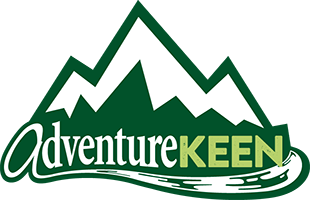
The AdventureKEEN Blog

The Perfect Holiday Gift for the Curious Soul: Unearthing The Wonder of Mushrooms
The search for a perfect gift often involves finding something unique, beautiful, and meaningful—an item that sparks curiosity and offers a new perspective. A remarkable candidate for such a gift has emerged: Maya Jewell Zeller’s breathtaking book The Wonder of Mushrooms: The Mysterious World of Fungi, featuring illustrations by Jenny DeFouw Geuder. This volume stands out as a rare find that will captivate a wide audience. This is not a typical field guide. It’s a lyrical, […]

Exciting New Nature Books from Stan Tekiela: Birds, Nature Smart, and Field Guides to Reptiles and Mammals!
Exciting New Nature Books from Stan Tekiela: Birds, Nature Smart, and Field Guides to Reptiles and Mammals! Renowned naturalist and author Stan Tekiela is launching several new books—perfect for exploring the Midwest and beyond. Get the scoop on these upcoming releases, including the latest addition to the Kids’ Guide to Birds series, Nature Smart, Reptiles & Amphibians of the Midwest Field Guide, and two from the Mammals series. Kids’ Guide to Birds Series: Now Featuring […]

Upgrade Your Halloween: Why Real Monsters and Ghosts Are a Must
As the air grows crisp and shadows lengthen, thoughts naturally turn to Halloween. It’s a time for carving pumpkins, watching horror movies, and telling spooky stories. But what if the most terrifying tales aren’t fictional? What if the scariest monsters are the ones lurking in America’s own backyards, documented in historical records and whispered about for generations? This Halloween, it’s time to go beyond the slasher films and fictional ghouls by diving into the chillingly […]

Unlock the Flavor: Why Julia Rutland’s Mushrooms Is the Must-Have Cookbook of the Year
To some, mushrooms are an afterthought. They’re the humble topping on a pizza, a simple side sautéed in butter, or a background player in a sauce. But these fascinating fungi hold the key to a hidden culinary universe, one packed with savory richness, incredible health benefits, and gourmet potential. Mushrooms: 50 Tried & True Recipes by Julia Rutland is not just another cookbook—it’s an essential guide that elevates this often-overlooked ingredient to the star of […]

Stan Tekiela’s NatureSmart Column – Bird Migration
Bird migration is still one of nature’s most interesting-yet-mysterious events. On the surface, migration seems rather simple and straightforward, but if you stop and take a detailed look, you will see it offers every shade of complexity possible. There are over 11,000 species of birds, and about 40% partake in some form of migration. Migrations range from simple elevational changes for species that live in the mountains, to short-distance movements to avoid unfavorable weather, to […]

Why Beyond Delicious Is the Must-Have Cookbook for Your Halloween Celebrations (Plus a Spooky Recipe!)
If you’re searching for the perfect book to add a dash of supernatural spice to your Halloween festivities, look no further than Beyond Delicious Cookbook: Recipes & Stories from the Original Ghost Whisperer by Mary Ann Winkowski. This one-of-a-kind cookbook is more than just a collection of recipes—it’s a spellbinding journey through ghostly encounters, family traditions, and the enduring magic of food. Whether you’re a book lover, a home cook, or a Halloween enthusiast, this […]

Stan Tekiela’s NatureSmart Column – Ruddy Ducks
When I go out to photograph wildlife, I usually have a specific species of critter in mind. The best images are typically the ones that I envision ahead of time, then carefully plan and execute. There isn’t anything left to chance. I make sure that I go to the spots or areas where the species is most abundant, and I go at the time of year when I can expect to see the critter in […]

The Wonder of Mushrooms: Where Beauty Meets Science in the World of Fungi
Few books capture the magic of mushrooms as vividly and insightfully as The Wonder of Mushrooms: The Mysterious World of Fungi, written by Maya Jewell Zeller and illustrated by Jenny deFouw Geuder. This book stands apart, not just as a celebration of fungal beauty, but as a bridge between art, science, and the poetic spirit of nature. A Kingdom of Their Own One of the book’s most fascinating aspects is its focus on the uniqueness […]

Ghosts of the Wild West: Haunting Legends and True Tales from America’s Frontier
Discover the Chilling Stories Behind the Wild West’s Most Haunted Places If you’re fascinated by the legends, hauntings, and history of the American West, Ghosts of the Wild West: Stories from Deadwood, Tombstone, and the Old Frontier by Jessica Freeburg and Natalie Fowler is a must-read. This captivating book blends true tales of outlaws, lawmen, and ordinary people with spine-tingling ghost stories, bringing the past to life in a way that will thrill both history […]

The Beyond Delicious Cookbook Blends Paranormal Encounters with Timeless Recipes
Some special recipes are passed down through the generations, while some come from the spirits of those who have crossed over. Mary Ann Winkowski’s Beyond Delicious Cookbook (available August 12, 2025) is a delightful, unexpected collection of recipes that combines the realms of the living and the dead, all through the universal language of food. The book weaves a tapestry of stories, memories, and supernatural encounters that reveal how food connects us across time, space, […]

